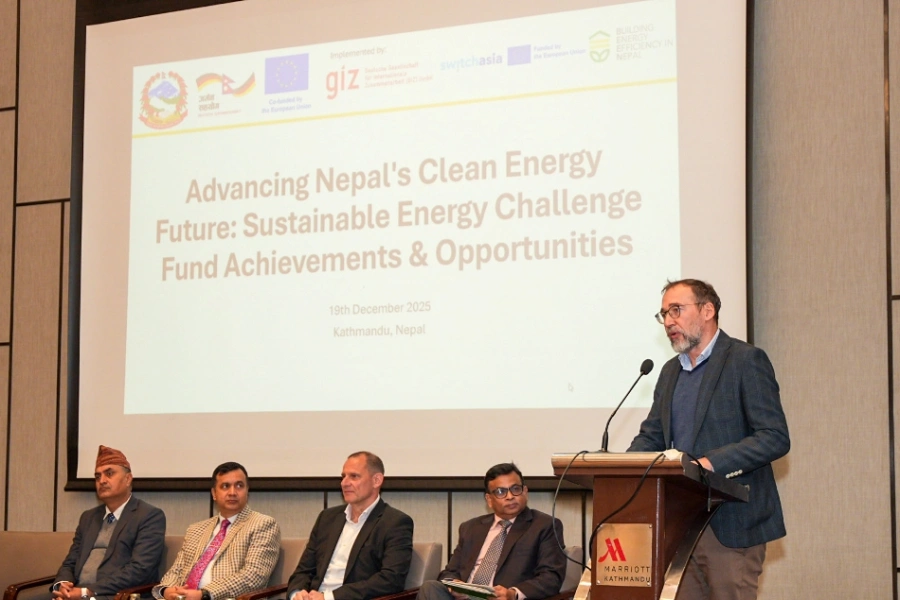A Wake-Up Call for Risk-Based Development and Disaster Preparedness
Out of 631 lives lost in various disasters in Nepal so far this year, an overwhelming 400 deaths occurred due to floods and landslides post June 2024. Bagmati Province suffered the most while financial losses amounted to billions of rupees this year.
This article depicts the devastating impact of floods and landslides in Nepal, highlighting the interplay between natural factors like climate change and human activities that exacerbate such disasters focusing on 2024 floods and disaster-related incidents.
Monsoon and Disaster Preparedness
The monsoon season in Nepal has officially ended, but the aftermath leaves critical questions. Were the floods and landslides purely a result of climate change? Or did our unscientific development practices and river encroachments play a significant role? The article seeks to answer these questions by analyzing the preparedness and actions taken by government and non-government agencies.
Before the calamity due to the September 28 rainfall, the Department of Hydrology and Meteorology (DHM) had issued a high alert, forecasting heavy rainfall from September 27 for three consecutive days. The warnings covered 56 districts, particularly in eastern and central Nepal. Despite these predictions, the necessary preparations for disaster mitigation, rescue, and recovery were inadequate, which led to significant human and material losses. While some efforts were made, they were insufficient to handle the scale of the disaster. Many Nepalis, ready to celebrate Dashain, faced massive destruction, both to their properties and livelihoods.
Nepal's steep geography, fragile soil, and unpredictable rainfall patterns make it highly susceptible to natural disasters. The DHM had predicted over 140 mm of rain within 24 hours in certain areas, signaling a potential disaster. However, even with prior warnings, there was a lack of adequate preparation at both three-tier government (local, province and federal) and citizen levels.
Nature will bring all the solace to your troubles. Read out the...

Understanding the Cause of Disasters
One critical question is whether climate change alone is responsible for the increasing frequency and severity of floods and landslides. While there is no doubt that climate change has altered weather patterns leading to increased rainfall intensity, extreme heat and cold, extreme rainfall, shifting monsoon times, and global temperature changes. Human actions too have worsened the situation, it’s not fair just to blame climate change.
Nepal experienced abnormal rainfall during this monsoon. In some areas, such as Khopasi in Kavre and Godavari in Lalitpur, rainfall reached unprecedented levels, with over 300 mm recorded in a 24-hour period. Such intense rainfall contributed to massive floods, but human activities like the encroachment of river channels, unregulated urban development, and extraction of raw materials from rivers have exacerbated the disaster. For example, in Rosikhola of Kavre, improper excavation led to river blockages, increasing the risk of flooding. Similarly, the widespread construction of roads, often unscientifically, has increased the vulnerability of Nepal’s fragile mid-hill regions.
While climate change is a significant factor, it is irresponsible to place all the blame on nature. Nepal's development activities, particularly unregulated and unsustainable practices of infrastructure development for example 5-7 roads that are going to almost one village from different foothills in the mid-hills of Nepal, are equally responsible.
Unscientific Development and Encroachment
Unscientific development practices, particularly in urban areas, are worsening the impact of natural disasters. The Kathmandu Valley, for example, has seen significant land-use changes. Over the past few decades, the expansion of built-up areas has more than doubled, leading to the encroachment of rivers and a reduction in natural water channels. This has made the valley more susceptible to floods.
In addition, bridges constructed over rivers, particularly in densely populated areas, are often too low or narrow, obstructing the natural flow of water. For example, in the Kathmandu Valley, many bridges hinder the passage of floodwater, causing it to accumulate and divert to other areas, leading to further damage. The bridges in Balkumari and near the CPN-UML party office are prime examples of poor infrastructure planning. In addition to this, the walls on both sides of the river for the protection of parks, religious places are also key examples of blockage of river during flooding leading to more inundation.
Collective Responsibility for Disaster
Natural disasters in Nepal result from both climate change and human mismanagement. The collective effects of river encroachment, unsustainable urbanization, and poorly planned infrastructure have magnified the impact of floods and landslides. For instance, the September 28 disaster was not just due to heavy rains but was exacerbated by unscientific extraction of river materials and the absence of risk-based land-use planning. Urbanization, particularly in Kathmandu, has transformed the valley into a concrete jungle, further increasing disaster risk.
Recommendations for the Future
To mitigate future disasters, there are several recommendations. First, a comprehensive assessment of the damage caused by floods and landslides is necessary. This should be followed by risk-based land-use planning that takes into account scientific data and local knowledge. Specifically, the article calls for the following actions:
1. Risk-Based Land-Use Planning: Nepal needs to adopt a risk-based approach to land-use planning, particularly in flood-prone areas. Proper zoning regulations should be implemented to prevent encroachment and minimize damage during floods.
2. Sustainable Development Practices: Unregulated extraction of river materials and poorly planned infrastructure projects need to be replaced with sustainable development practices. Only roads, bridges that are necessary should be built, and they must be designed to withstand natural disasters.
3. Restoration and Management of Rivers: The encroachment of rivers must be reversed. For example, the construction of structures near rivers should be minimized to allow for the natural flow of water during floods. In some areas, structures that block water flow should be demolished if possible, and flood-resistant infrastructure should be prioritized.
4. Citizen Engagement and Science-Based Approaches: Citizens should be involved in disaster risk reduction through community science initiatives. By gathering data and participating in flood monitoring efforts, ordinary people can play a crucial role in reducing disaster risk.
5. Urban Flood Management: In urban areas, public lands should be identified for constructing flood catchment structures, such as ponds and playgrounds that can help with groundwater recharge, flood control, hold and pass the flood for a certain period of time.
6. Sediment Management and Policy Changes: The article emphasizes the need for policies that address sediment management, as current guidelines do not take sediment into account when planning for infrastructure. Roads, railways, and housing developments near rivers should be reviewed for their potential to increase flood risk.
7. Coordination between Local, Province, and Federal Governments: There needs to be better coordination between local, provincial, and federal governments. Early warning systems, such as miking and citizen reporting, should be strengthened to ensure timely communication of disaster risks to vulnerable communities. Local government is directly in action for disaster management, proper training, information flow, and capacity enhancement should be done properly.
The recent floods and landslides in Nepal underscore the urgent need to rethink the country's approach to disaster risk management. While climate change is a significant factor, human activities such as river encroachment, unregulated development, and unsustainable infrastructure practices have worsened the impact of natural disasters. If we look at the Hoover Dam in the USA, which was built in 1930, it is a multi-purpose and the biggest dam built to control the floods in the lower Colorado River Basin. We also need to think about the development of such a multi-purpose project mainly in major river basins for irrigation, electricity, recreation, and flood control, otherwise the changing climate and melting of snow in the Himalayan River basin may cause unexpected disaster in the future. By adopting risk-based land-use planning, sustainable development practices, index-based flood insurance, and engaging citizens in disaster risk reduction, Nepal can better prepare for future disasters and reduce the devastating impacts of floods and landslides on its people and the economy.








































